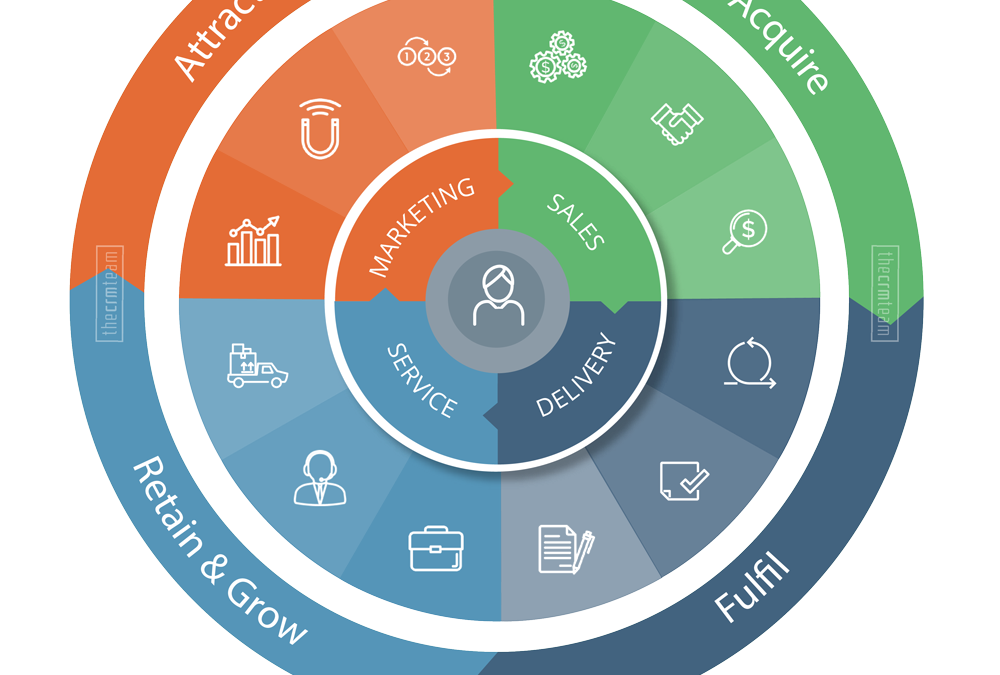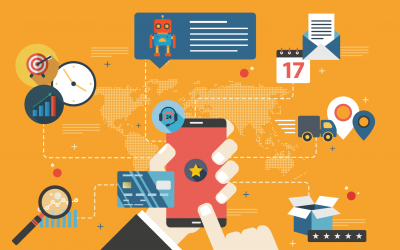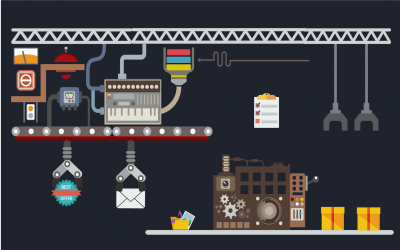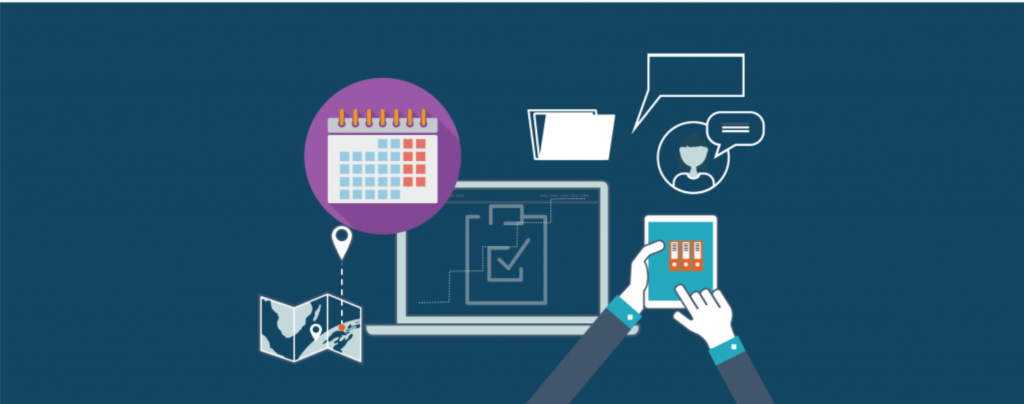No Results Found
The page you requested could not be found. Try refining your search, or use the navigation above to locate the post.

Many people think that CRM is software. But it’s far more than that.
Customer Relationship Management is about blending technology and strategy to guarantee great customer experience.
1. Marketing
2. Sales
3. Delivery
4. Service

A bitter let down
A guy in our office recently ordered a cell phone from a tele-sales company. Their marketing was excellent and they had created a strong brand that he trusted. The salesman on the phone was very knowledgeable. His easy manner made buying a simple process.
But when it came to receiving his phone, he had a different experience. On opening his package, he realised the phone was completely different to the one he ordered. When he contacted the company to correct things, nobody seemed to care. It took him a long time to get the company to deliver the phone he’d actually bought. When they eventually did, he vowed never to buy from them again.
Customers are lost through experiences like this.
It doesn’t matter how good certain teams in your business are, without consistency across the four touch points, you’ll always hemorrhage customers and revenue. This is where Customer Relationship Management comes in.
CRM gives you this consistency. A good, functioning CRM system provides great customer experience – right across your business. And because customers have a good relationship with you, you’ll be able to keep hold of them. This creates up-selling and cross-selling opportunities. Selling to current customers is far easier than attracting new ones.
Great customer relationship management doesn’t happen overnight. It’s a journey. But it’s a journey every company needs to be on.
At The CRM Team, we are experts on this journey. Whatever stage you have reached, we can assist you to get to the next one. See which stage you are at.
The page you requested could not be found. Try refining your search, or use the navigation above to locate the post.
Discover More Stories

For years, the human touch was considered the cornerstone of great customer service. Friendliness, a helpful attitude – it’s easy to imagine.
But can machines augment this and help make customers even happier?
A recent study from McKinsey identified marketing and sales as among the top areas that will soon be transformed by A.I.:
‘A.I. technologies are finding applications across the value chain, but some parts of the value chain are getting more attention than others… customer service as well as operations and product development, all tend to use the most commonly cited A.I. applications.’ 1
Many think A.I. is still an aspirational technology, but the numbers reveal that it’s a revolution already up and running. Consider some of the numbers:
‘78% of brands say they have already implemented or are planning to implement artificial intelligence … by 2020 to better serve customers. With regards to chatbots, which are in many ways the most recognisable form of A.I., 80% of sales and marketing leaders say they already use these in their CX or plan to do so by 2020.’ 2
A.I. and, in particular, machine learning not only helps make self-service interfaces more intuitive but anticipates specific customer needs by learning from context, chat history and preferences.
A major reason for A.I.’s edge when it comes to keeping customers smiling? It’s all down to data – and the ability to process and make sense of it rapidly.
Simply put, machines can locate and process information far quicker than we can. Given the vast quantities of both incoming and outgoing information a typical customer service department has to deal with digital tools provide a genuine edge.
Audio calls. Live chats. Troubleshooting queries. Service scheduling. Maintenance requests. Machines can do it better and faster – and they don’t need any breaks.
More than this, A.I.-enabled customer service tools can:
Today, all great customer service centres on personalisation. It’s based on understanding a customer, their history with a company and their unique needs. This means being reactive to both what’s happened in the past, as well as understanding how to help shape the best outcomes for that customer in the future. But its also about maintaining an ongoing, value-adding relationship, and not just coming into the picture when its time to make a sale.
With complete access to customer information and buying history, A.I. helps make this process – of building and maintaining relationships – smart. More than this, A.I. is always 100% brand consistent. So customers know what to expect, every time they make contact. A real trust builder.
Today, companies can no longer focus only on customer satisfaction post-sale. It’s about providing ongoing, meaningful and helpful interaction, and crafting amazing, personalised and highly relevant experiences. A.I. is the driver behind that personalisation process. The more relevant an offer or advice is to a customer, the more cared for that customer feels.
In this way, A.I. helps turn everything from a quick query to the sales process itself into a great customer service experience. Why? Customers are presented with a range of tailored options that speak intelligently to their unique needs.
Today, get customer experience wrong and you push your customers into your competitors’ hands. Do it right and you build brand advocates.
It’s about keeping up, keeping an open mind, and listening to what today’s consumers want. And when it comes to a better, more personalised service, A.I. technology is what you need.
Want to see how you can deliver exceptional customer service? Check out an A.I.-infused customer service solution.
The page you requested could not be found. Try refining your search, or use the navigation above to locate the post.
Discover More Stories

$25 billion! If you are not part of this spend chances are your competition is! An April 2018 report from global research agency Forrester concluded:
‘As digital marketing complexity increases, more marketers are embracing automation tools to improve efficiency and speed to market. In our first Marketing Automation Technology Forecast … we expect global spending on marketing automation tools to surpass $25 billion by 2023, implying a 14% annual growth rate.’1

Personalisation, reactivity, relevance: words like these get thrown around a lot in marketing today. The reason: giants like Google, Facebook, YouTube and Amazon are changing what customers – including yours – are coming to expect from their daily digital experiences. Gone is the one-size-fits-all approach to marketing. In its place: relevance and reactivity – with a high degree of personalisation.
The Forrester report highlighted:
‘Customers reward firms for personal, relevant, and value-added individualized experiences. As personalisation becomes the standard, consumers now expect this level of engagement across channels and digital touchpoints. Marketing automation technologies can help marketers scale their personalisation efforts.’
Slick, speedy, insightful and intelligent, top-tier marketing automation tools are remaking how marketers both reach and talk to their customers.
At base, marketing automation is a customer relationship management (CRM) solution that allows companies to run massive marketing campaigns with ease. No mess. No fuss. No unnecessary admin. More than that, marketing automation means companies can track and nurture leads at the touch of a button, sync customer information into a centralized hub and reach prospects in new, tailored, automated ways. In a nutshell: gone are manual processes. Ditto for misaligned marketing and sales goals. In their place is a single solution that handles all elements of the marketing process, leaving marketers free to focus on the creative and relationship-based elements of their roles, not the admin burdens.
It’s all about accuracy and ease. Marketing automation covers:

More specifically, marketing automation is about:
Customer journeys are the sum of individual personalized experiences with a brand. With marketing automation, companies can tailor every interaction based on customer data to create resonant, seamless journeys through every brand touchpoint.
The benefits of marketing automation are many, but here’s a snapshot:
A great marketing automation tool’s other great feature is what it lets marketers know about campaign performance. Integrated analytics allows companies unprecedented insight into how their campaigns are performing. Meaning ROI is never murky, and the result of campaign spending is always crystal clear.
With marketing automation, companies can effectively and meaningfully connect with customers through their purchasing journey, no matter how far along they are, be it acquisition or advocacy. Providing great, relevant content to customers in the way they prefer not only drives sales, but helps turn prospects to brand advocates.
Best of all, it’s automated. And happens in a snap.
Do you want to learn more about marketing automation? Read what our marketing automation solution offers you.
References
1 https://go.forrester.com/blogs/global-marketing-automation-spending-will-reach-25-billion-by-2023/
The page you requested could not be found. Try refining your search, or use the navigation above to locate the post.
Discover More Stories

In place of a call from a customer for servicing or repairs – an automatic, detailed notification from the machine itself. Manual updating? Not any more: inventory changes reflect on their own, in real time. Diagnosis by a technician? How about machines that self-diagnose.
This is field service enabled by the Internet of Things futuristic, but it’s far from it. In fact, more and more organisations are beginning to adopt IoT technologies. The results are enhanced efficiency, lowered costs and the one-touch approach to business more and more customers are coming to expect.
As early as 2015, Kevin Ashton, who founded the Auto-ID Center at the Massachusetts Institute of Technology, noted at a European customer service conference that field service management was the first industry being transformed by IoT. In fact, IoT is considered by many to trace its origins precisely to field service applications.
So, what are the benefits of embedding IoT technology in a field service business? Here is some food for thought.

Your customers aren’t mechanical experts. Nor should they be. However, when something goes wrong, your customer isn’t always able to provide a clear description of the problem, or what needs to be done.
The result: delays and frustration, technicians dispatched with the wrong parts, or no need for a dispatch at all.
With IoT, however, issues are instantly clear – because reports are generated automatically by intelligent software. This means problems can be isolated instantly and addressed efficiently.
Consider the following scenario. A customer phones in because a piece of equipment has stopped working. He says that a certain part is definitely to blame. A technician is dispatched, carrying just that part. After arriving, it becomes clear that the problem lies elsewhere. Another component is needed – one the company doesn’t happen to have in stock. The customer becomes frustrated – he’s losing business every moment the machine is out of service. The technician is in an awkward position too – the best she can do is return with the right part in a few days’ time. In the interim, the customer has sought the help of a competitor.
With IoT-enabled devices, this situation never need arise.

Consider a twist on the above scenario. Ever run out of a part you could have sworn was in stock? Ever promised a customer a fix using just that part? With IoT-connected devices, this problem becomes a thing of the past, because the system sends out a signal when new parts should be ordered.
Moreover, technicians can get a view of company inventory instantly, even if they’re in the field. The result is an end to well-meaning but empty promises. It also means companies never over or under order, optimising warehousing.

IoT devices understand themselves. Meaning? They can self-diagnose, and report on their performance. By isolating specific faulty components and monitoring overall system operation, AI gets to work locating the root cause of issues being experienced.
The result is a reduced need for in-person visits by a technician, saving time and money. It also means that when a technician does need to be dispatched, the right part is always in-hand.
For many, the capabilities of IoT-enabled devices still seem a little futuristic. Moreover, a business-as-usual mindset may lead to a reluctance to change. In the unlikely event that a company has a total monopoly on the market, it’s true – there’s no need to change, as customers simply have to use that firm’s services, no matter the quality.
However, for most businesses, steep competition is a reality. Meaning: companies are always looking for ways to do things faster, better and more cheaply and turn to the providers best able to meet their needs. And if there isn’t a competitor yet, new technology is making it easier for companies to enter new markets – and quickly.
Many companies quick to adopt the new digital capabilities that began to emerge in the early 2000s reaped the rewards. That opportunity for first-mover advantage is now playing out again. Field service companies that get on board with IoT-enabled tech today may be poised to stand out from the rest of the field in a big way.
Want to find out more? Have a look at an IoT-enabled field service solution that’s tailored for you.
The page you requested could not be found. Try refining your search, or use the navigation above to locate the post.
Discover More Stories

I’m reaching out – but leads aren’t reaching back. Is it my approach? Is there another way to connect better or more meaningfully from the get-go – one I haven’t thought of?
If this feels familiar, read on.
It’s been quick, but radical. The nature of the sales game has changed – profoundly.
Gone are the days in which cold calls – or emails – could be relied upon to get you the connections you need. In fact, selling through any ‘cold’ contact is becoming more and more difficult.
Today’s sales landscape is, more and more, about one thing – trust. And not only the kind of trust that is built up over years of working together, but up-front, just-starting-out trust. And the way to get that trust going is: through relationships.
Consider this: A warm referral is four times more likely to result in a sale than a cold call.1
This is the world of relationship selling. Let’s explore it in more detail.

This is a traditional step – and still necessary. However, it’s being remade through modern CRM solutions.
With LinkedIn integration and machine learning capabilities, it’s possible to not only quickly identify who matters most, but who is most likely to buy, and how you can leverage your connections (or your colleagues’) for a warm introduction.
Then, once you’ve got a foot in the door, it becomes possible to make the most of that new connection: to find other meaningful contacts at the same company – and elsewhere, too.

We’re all inundated with digital messaging every day. In this hyper-saturated space, the only way to stand out is through relevance. By understanding a potential customer’s unique pain points and challenges – and offering them a tailored solution – you show interest and build trust.
One way to do this? Keep track of what your connections share on LinkedIn and the discussions they participate in. Have they shared particular news articles? Commented on trends? With insight into this, you’re far better to understand their specific wants and needs.

Contact a prospect or current customer when they’re overburdened with other things? At best, you’ll get silence. At worst, you’ll hurt the relationship, adding just one more pressure they need to deal with. You can leave the approach to chance or intuition, or you can get data-savvy.
How? By evaluating the health of your relationship, based on transactions, sentiment, social network messages, emails and the frequency and level of those interactions.
Predictive analytics allows you to identify not only where new business opportunities lie and which accounts to reach out to, but where potential risks for each account may lurk.

Managing many accounts – and doing it well – is tricky. Some people you interact with all the time. Others go quiet, only to make contact at an unexpected time.
When a customer feels they’ve caught you off guard or that you’re not ready to help just when they need it can mean a relationship red flag.
However, by keeping content ready to go when your customers are, you emphasise your interest and commitment. Moreover – you’re now able to tell when someone interacts with your content or if it’s been shared with other decision-makers, adding new leads to your book.

It’s easy to lose focus – or to focus on the wrong client, at the wrong time. Trying to keep track of where every customer is in the buying process is impossible without a top-down, data-driven view.
Wading through emails and correspondence doesn’t work. And it saps time. However, it’s possible to easily prioritise tasks and opportunities with the right technology. Need some guidance as to what to do next? With machine learning and analytics, that’s possible, too.
Relationship selling is remaking everything – from how connections are formed and nurtured to how they’re grown and leveraged.
Today’s always-on world of business means that impersonal, untailored contact is ignored more and more – it simply forms part of the mass of unasked-for communication we’re all faced with each day.
The solution: trust.
By leveraging your existing connections, you move from a cold caller to a known caller. Moreover, with better insight into potential customers’ pain points and needs, you’re not only
At every stage of the sales process, relationship building is coming to take centre stage.
To find out more about how you can embrace relationship selling in your sales process, check out our Microsoft sales solution.
1 http://www.nielsen.com/us/en/press-room/2015/recommendations-from-friends-remain-most-credible-form-of-advertising.html
The page you requested could not be found. Try refining your search, or use the navigation above to locate the post.
Discover More Stories
Recent Comments